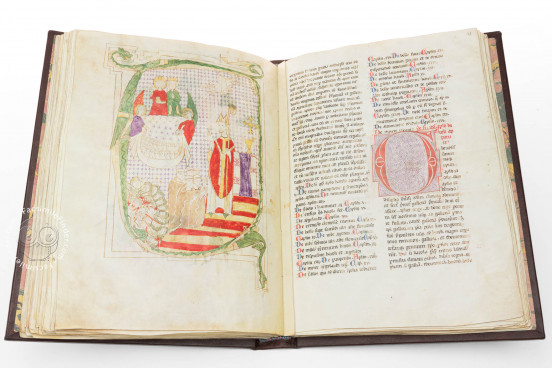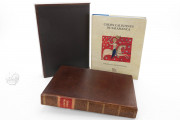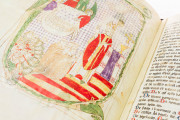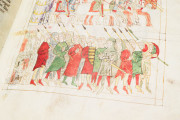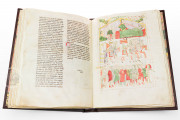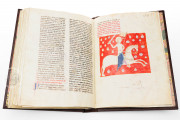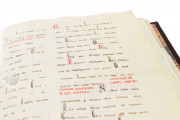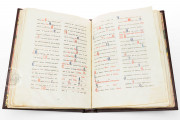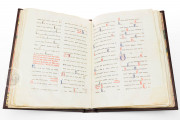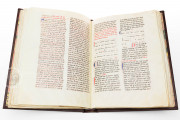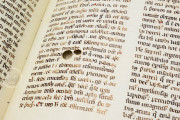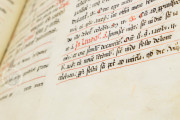The Codex Calixtinus of the University of Salamanca—known also as the Liber sancti Jacobi—was made in the second quarter of the fourteenth century, probably in Santiago de Compostela. The work primarily concerns Saint James the Greater, whose shrine, in Santiago near the Atlantic coast, is a hugely important Christian pilgrimage site. Unlike other copies of the same text, this manuscript contains an equestrian image of Saint James, one of four miniatures. Space was left for musical notation that was never executed.
This exquisite illuminated manuscript represents one of the few extant complete copies of the Liber sancti Jacobi (Book of Saint James). The anonymous compiler, whose identity has been lost to history, appears to have been an exceptional 12th-century figure—presumably a scholar, traveler, and devoted follower of the Apostle Saint James.
A Masterpiece of Jacobean Literature
When examined holistically, this anthology emerges as a collaborative compilation featuring contributions from various 12th-century copyists, poets, musicians, writers, narrators, and theologians. The manuscript begins with a letter attributed to Pope Callixtus II (1119-1124) and is methodically organized into five distinct books: Book of the Liturgies (Book I), Book of the Miracles (Book II), Transfer of St. James' Body to Santiago (Book III) History of Charlemagne's Conquests (Book IV), A Pilgrim's Guide (Book V, widely considered the most renowned section).
The Liber sancti Jacobi transcends its function as a comprehensive guide detailing the various pilgrimage routes from France to Santiago de Compostela. It also provides valuable documentation of regional traditions, cultural practices, and hagiographical narratives surrounding the apostle.
A Repository of Medieval Erudition
The Salamanca Codex Calixtinus contains several textual passages that scholars consider more authentic and philologically accurate than those found in the copy that was infamously stolen from the Cathedral archives at Compostela. This manuscript represents an exceptional example of medieval bibliographic artistry, distinguished not only by its charming illustrations but also by its meticulously decorated initials and capitals.
The manuscript's significance is further amplified by the unparalleled originality of its pilgrim's guide, which has maintained its singular importance throughout the centuries. Replete with enigmatic elements and historical mysteries, this invaluable compilation constitutes a unique scholarly resource, offering profound insights into medieval intellectual thought, spiritual practices, and quotidian life.
We have 1 facsimile edition of the manuscript "Codex Calixtinus of the University of Salamanca": Codex Calixtinus de la Universidad de Salamanca facsimile edition, published by Siloé, arte y bibliofilia, 2012
Request Info / Price
